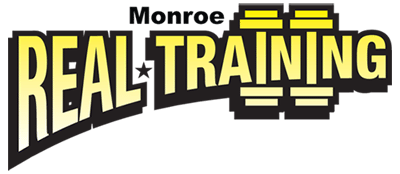Healthy Eating – Part 2
Let’s continue our discussion about healthy eating by allowing me to introduce another critical component of our diet – fiber. As I talked about in the previous article, this is arguably the best time of year to start eating better. Local fruits and vegetables are in season, and farmers markets are filled with growers, chefs and shoppers who have great ideas about how to use what’s fresh this time of year.
We have all heard that we need to eat a diet rich in fiber, but what exactly does that mean? Fiber is a broad term for the stuff in our diets that is not digestible, meaning we cannot utilize that stuff as fuel to make energy. Fiber serves other important purposes such as assisting in the digestion process and helping us feel full and therefore ready to stop eating.
One component of fiber is a molecule called cellulose. Cellulose is made by plants and serves as a structural molecule for its cell walls, helping the plant be the rigid organism that it is. The cell wall surrounds the outside of each plant cell, providing structural support. Cellulose is a large molecule comprised of thousands of sugar molecules bonded together to form a strong polymer which is used to make paper products. The specific sugar type in cellulose is glucose, the same molecule that we break down to form energy.
Glucose is a monosaccharide, meaning that it is a single, stand alone unit. Fructose is another example of a monosaccharide. When two monosaccharides bond together a disaccharide is formed. An example of this is sucrose, a molecule containing one glucose monomer and one fructose monomer. When many many monosaccharide units bond together a polymer such as cellulose is formed.
The human body creates a polymer called glycogen to store glucose monomers for future use as fuel. In contrast, plants create a polymer called starch to store glucose that will be used to make energy. Cellulose is also a polymer of glucose but it is chemically quite different from starch or glycogen. How the carbon and oxygen atoms in the monomers are bonded is different between starch and cellulose. The glucose monomers in starch are bonded together through chemical linkages known as alpha linkages while the chemical linkages in cellulose are beta linkages. Humans have enzymes (a type of protein) that can break apart alpha linkages but we do not have enzymes that can readily break beta linkages. Thus, molecules like cellulose, found in all of those wonderful vegetables you’re buying this time of year, simply pass through our bodies without being utilized as fuel.
A big question about cellulose and the other non-digestible molecules that comprise dietary fiber is what is their purpose for us humans? There have been countless studies conducted to show that dietary fiber intake correlates with better health, particularly a lower incidence of colon cancer and lower cholesterol levels. The presence of fiber in the intestinal tract helps move everything along more efficiently and can prevent constipation assuming sufficient water intake. The dots connecting dietary fiber with health outcomes have not been entirely identified, but it is well accepted that dietary fiber is good. In addition, because fiber does not get digested it does not contain any calories. Therefore, we do not have to eventually burn off that component of our food.
As another use of dietary fiber, people in Sri Lanka have figured out how to economically benefit from the fact that cellulose is not readily digested by animals. People there have been extracting cellulose from elephant poop to make paper products. You should seriously check into this. You may buy these products online, and there are many fun gift ideas. If you have to buy a Christmas gift for someone you don’t particularly care for, consider purchasing elephant poop stationary. In case you’re wondering it is sterilized in the paper making process.
If you think your diet is a little short on fiber, make an effort to increase your intake this summer. It should be easy to do given the types of delicious foods that are now available.
- Healthy Eating – Part 3 - September 1, 2014
- Healthy Eating – Part 2 - June 25, 2014
- Healthy Eating – Part 1 - June 12, 2014

